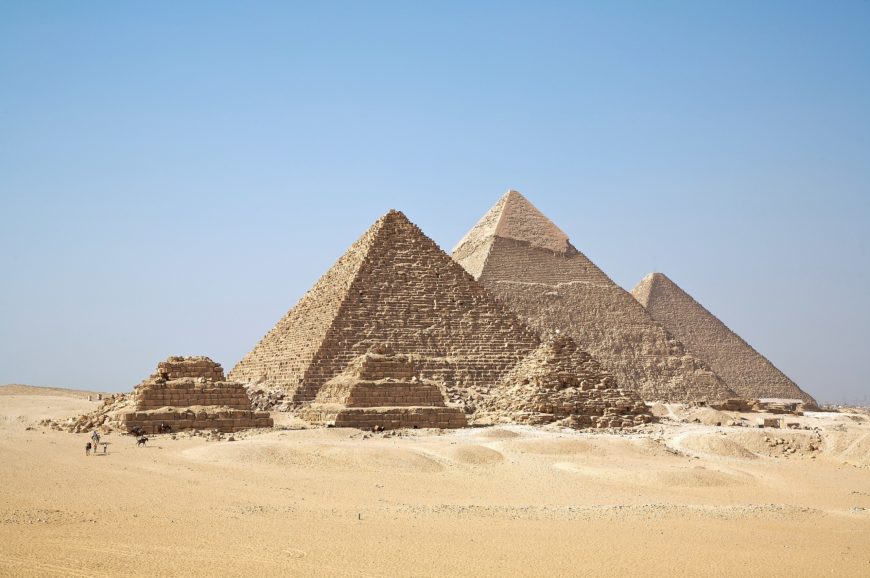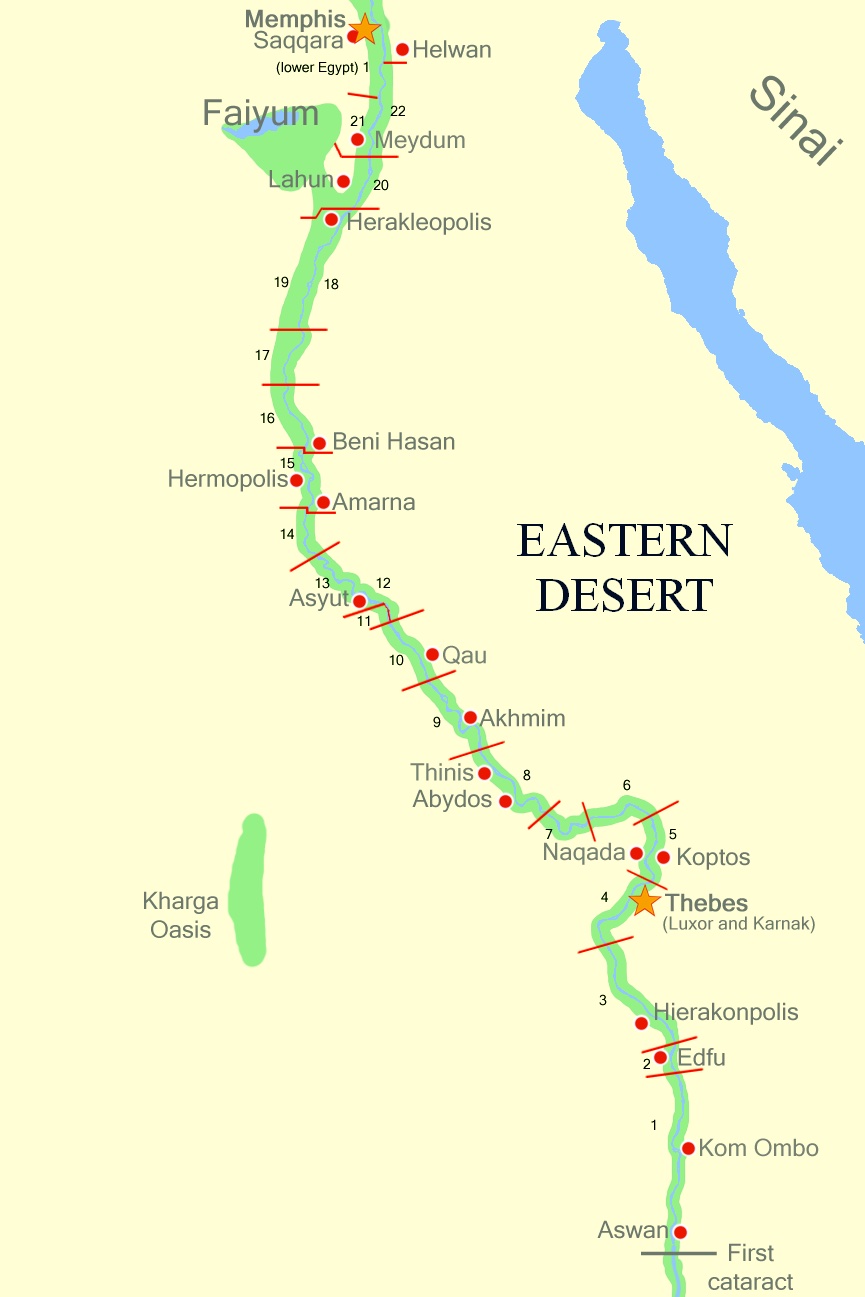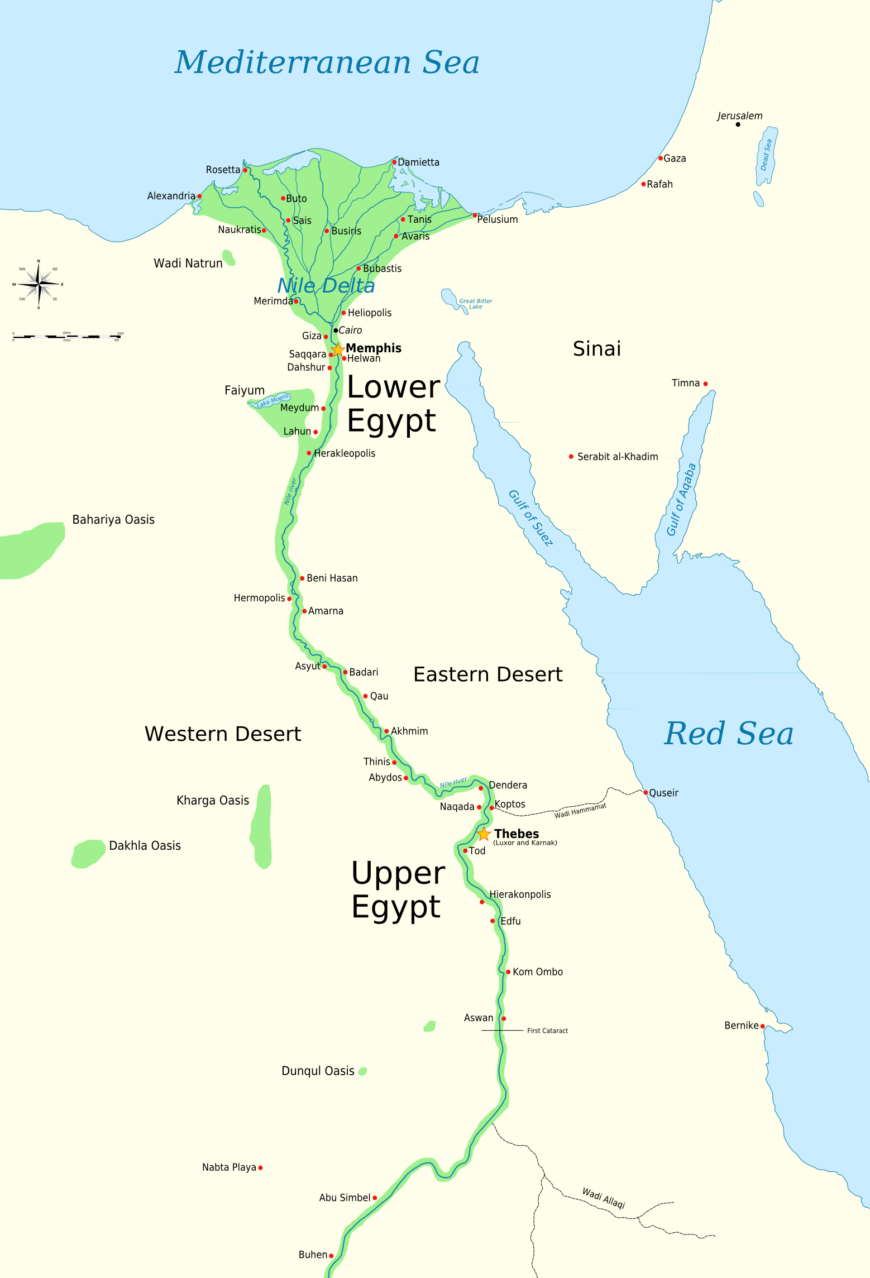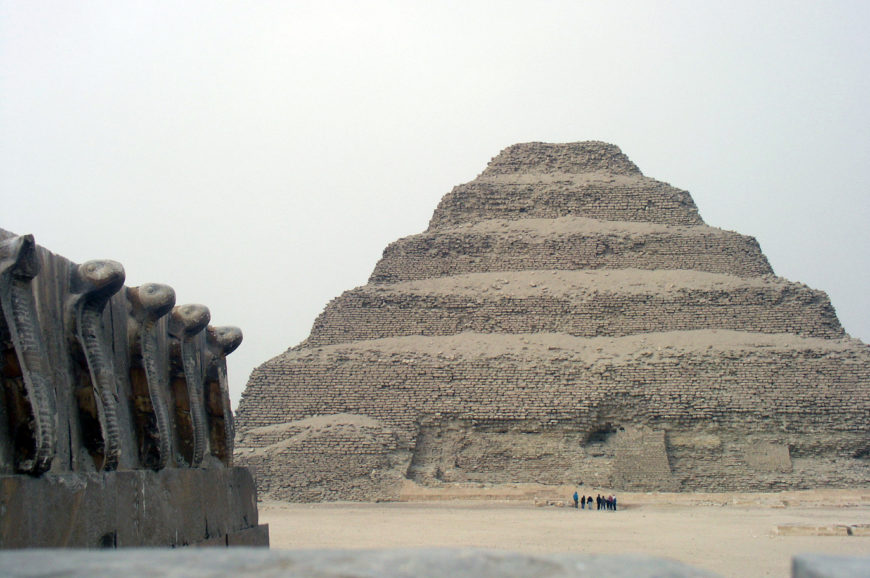
Step Pyramid, viewed from the south, Stepped Pyramid complex, 3rd Dynasty, Saqqara, Egypt (photo: Dr. Amy Calvert)
Viewed as a golden age by later Egyptians, the Old Kingdom was a period of great confidence, stability, organization, and administrative control. Exemplified by the soaring pyramids and royal representations that project a remarkable level of poise and serenity, this period demonstrates the stability and wealth that resulted from the success of the storehouse-based economic system. The kings devoted huge resources to provisioning their mortuary cults via state run building projects. Power was delegated to elite overseers who administered these massive endeavors, earning royal ‘endowments’ for their own afterlife in the process. Labor, both highly-skilled and untrained, was derived from the native population (mostly during the flooding season, when fields could not be worked) and there is archeological evidence that they were fairly compensated.
Old Kingdom (c. 2649–2150 B.C.E.)
Often considered to begin with the Third Dynasty and Netjerikhet (Djoser), whose famous Step Pyramid complex initiated the massive stone royal mortuary monuments that characterize the Old Kingdom period. The role of the king became closely connected with the deities Horus and Ra making the pharaoh responsible for the maintenance of divine order (ma’at). The first Fourth Dynasty king, Snefru, was the greatest of the pyramid builders and constructed 3 massive pyramids that demonstrate the development of the smooth-sided form. The astonishing level of architectural and engineering skills belonging to the craftspeople during this time are still clearly evident, as are their useful, but sometimes less-successful, experiments along the way.
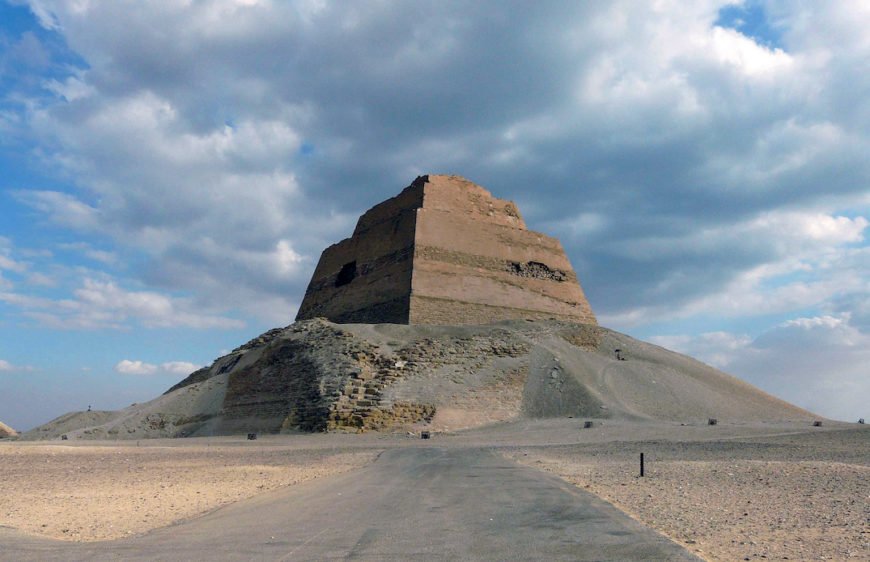
The second pyramid after Djoser’s. Meidum pyramid, built for Snefru, 3rd Dynasty (photo: Kurohito, CC BY-SA 3.0)
Snefru’s successor was Khufu, who used the lessons of his predecessor to build the Great Pyramid at Giza. The other two main pyramids at Giza were built by his successors Khafre and Menkaure. During this era of monumental pyramid complexes, focus on the local shrines was reduced and received less royal support. The administrative seat continued at Memphis throughout this period. Fifth Dynasty kings built smaller pyramids, some with burial chambers inscribed with texts that are among the earliest religious writings known. These Pyramid Texts, as they are now known, are also the oldest of the collections of funerary literature from Egypt. Several of these rulers constructed marvelous temples dedicated to the sun god Ra, whose cult was on the rise throughout the Old Kingdom.
Elites who served the kings of this period were honored with beautifully decorated tombs located in cemeteries surrounding the royal monuments. The process of mummification was largely developed by this point and bodies were usually interred in rectangular coffins of wood. Near the end of the Sixth Dynasty, sections of the Pyramid Texts, previously reserved for royalty, began to appear in the tombs of important non-royal individuals—an apparent symptom of the breakdown of centralized control that led to the end of the Old Kingdom.
This breakdown was likely caused by a number of factors, possibly including famine. One major factor may have been the unusually long reign of Pepy II in Dynasty 6. Having reigned from early childhood until his 90s, Pepy outlived several of his expected heirs, possibly causing succession issues upon the king’s death. This same period saw the power of regional governors, called nomarchs, increase. These elite positions had become hereditary over time, coalescing into generational control over localities. As their importance grew, these nomarchs became increasingly more independent from the king. The simultaneous rise of numerous nomarchs resulted in conflict between neighboring provinces and exacerbated the disintegration of centralized control that occurred at the end of the Old Kingdom.
First Intermediate Period (c. 2150–2030 B.C.E.)
During this period of disunity, kings continued to rule from Memphis as Dynasties 7 and 8, but they did not control the entire country and there is evidence of civil wars. Other areas were ruled by provincial governors, with one powerful family group ruling from Herakleopolis and another further south at Thebes. These elite figures had close ties with their local shrines and temples, probably serving as priests among their other roles. One Theban nomarch, Intef II, began an assault against the north that continued for several subsequent generations until Nebheptra Mentuhotep II, eventually defeated the Herakleopolitan kings and reunified the country. Despite the political turmoil, there were innovations; Coffin Texts began to appear in tombs and mummy masks made of cartonnage (akin to papier-mâché) started to be produced.
| Period | Dates |
| Predynastic | c. 5000–3000 B.C.E. |
| Early Dynastic | c. 3000–2686 B.C.E. |
| Old Kingdom (the ‘pyramid age’) | c. 2686–2150 B.C.E. |
| First Intermediate Period | c. 2150–2030 B.C.E. |
| Middle Kingdom | c. 2030–1640 B.C.E. |
| Second Intermediate Period
(Northern Delta region ruled by Asiatics) |
c. 1640–1540 B.C.E. |
| New Kingdom | c. 1550–1070 B.C.E. |
| Third Intermediate Period | c. 1070–713 B.C.E. |
| Late Period
(a series of rulers from foreign dynasties, including Nubian, Libyan, and Persian rulers) |
c. 713–332 B.C.E. |
| Ptolemaic Period
(ruled by Greco-Romans) |
c. 332–30 B.C.E. |
| Roman Period | c. 30 B.C.E.–395 C.E. |

